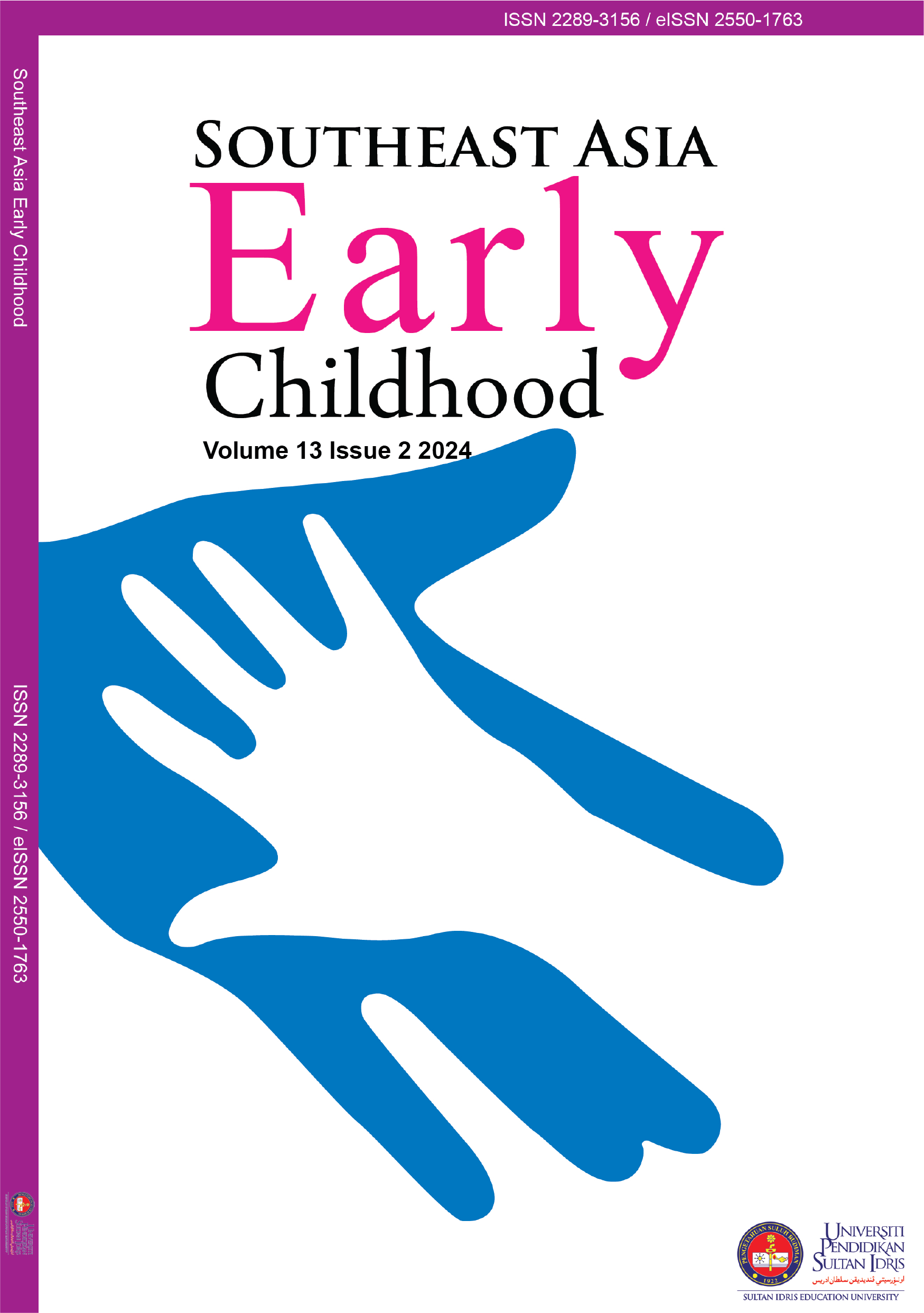Special Needs Education for The Visually Impaired in Malaysia
DOI:
https://doi.org/10.37134/saecj.vol13.2.9.2024Keywords:
Braille literacy, Inclusive education, Special needs education, Visual impairmentAbstract
This study examines the development, challenges, and educational approaches for visually impaired children in Malaysia, framed within the goals of inclusive education as outlined by Sustainable Development Goal 4 (SDG 4). Despite progressive policies, significant challenges persist, including limited access to specialized resources, inconsistent quality across regions, and a lack of adequately trained educators. The study aims to explore the historical development of special education for visually impaired children, classify visual impairments, and examine various learning mediums. Using a qualitative literature review, data were collected from academic and government source. Findings reveal notable gaps in resource allocation and instructional frameworks, especially in rural areas, where visually impaired children face greater educational barriers. The study’s implications underscore the need for standardized frameworks and increased resource distribution to ensure equitable access to quality education. Future research should address the long-term impact of dual media learning and investigate best practices from global contexts to enhance Malaysia’s approach to visual impairment education. Aligned with SDG 4, the findings advocate for collaborative efforts between educators, policymakers, and community stakeholders to create an educational landscape where visually impaired children can fully engage and thrive academically and socially.
Downloads
References
Alya Qasdina Ng Ai Lee, & Kway, E. H. (2023). Need analysis of pre-braille skills module as the pedagogical support in early braille literacy learning. South Asian Journal of Social Sciences and Humanities, 4(1), 90–111. https://doi.org/10.48165/sajssh.2023.4106
Azizah Awang, Intan Farahana Abdul Rani, Kway Eng Hock, Nur Adillah Ramly, & Rozita Kamil. (2024). Innovative approaches in teaching early braille reading skills : A theory and practice study. Journal of Contemporary Social Science and Education Studies, 4(2), 177–200. https://doi.org/10.5281/zenodo. 13371193
Bahagian Pembangunan Kurikulum. (2018). Buku panduan guru: Pelaksanaan Kurikulum Standard Prasekolah Kebangsaan Pendidikan Khas (Semakan 2017).
Department of Statistics Malaysia. (2024). Person With Disability Statistics Malaysia. https://www.padu.gov.my
Hazlin Falina Rosli, Zur’ain Harun, Mohd Izzudin Mohd Pisol, Zetty Nurzuliana Rashed, & Azmi Azwan Mohammad Azmi. (2021). Pembelajaran al-Quran braille: Cabaran dan pelaksanaan. In Ahmad Syahir Ahamad Nzly, Nurhanisah Senin, Muhammad Aizat Syimir Rozani, & Mohamad Redha Mohamad (Eds.), Pendidikan Pemangkin Peradaban Islam (pp. 57–64). Penerbit Fakulit Pengajian Peradaban Islam (FPPI).
Individuals with Disabilities Education Act (IDEA). (2017). Sec. 300.324 (a) (2) (iii). United States Department Of Education. https://sites.ed.gov/idea/regs/b/d/300.324/a
Kementerian Pendidikan Malaysia. (2012). Laporan awal: Pelan Pembangunan Pendidikan Malaysia 2013 - 2025.
Kementerian Pendidikan Malaysia. (2017). Kurikulum Standard Prasekolah Kebangsaan Pendidikan Khas: Pendidikan Prasekolah Ketidakupayaan Penglihatan. (Dokumen Standard Kurikulum dan Pentaksiran Semakan 2017). Bahagian Pembangunan Kurikulum.
Kementerian Pendidikan Malaysia. (2024). Program pendidikan khas integrasi. Portal Kementerian Pendidikan Malaysia. https://www.moe.gov.my/program-pendidikan-khas-integrasi
Kizilaslan, A. (2020). Teaching students with visual impairment. Progress in Education, 63(April), 49–70.
Koenig, A. J., & Holbrook, M. C. (2000). Ensuring high-quality instruction for students in braille literacy programs. Journal of Visual Impairment and Blindness, 94(11), 677–694. https://doi.org/10.1177/0145482x 0009401102
Kway, E. H., & Wong, Y. L. (2020). Kod braille Bahasa Melayu: Pindaan 2020. Majlis Kebangsaan bagi Orang Buta, Malaysia.
Malaysian Association for The Blind. (2020). Persons with disabilities. NGOhub We Serve Changemakers. https://www.ngohub.asia/organizations/malaysia-association-for-the-blind
Miller, C. (2023). Overview of Dual Media. Path to Literacy. https://www.pathstoliteracy.org/overview-dual-media
Miyauchi, H. (2020). A systematic review on inclusive education of students with visual impairment. Education Sciences, 10(11), 1–15. https://doi.org/10.3390/educsci10110346
Mohd Nur Adzam Rasdi, Siti Rahmah Ahmad Razuan, Norakyairee Mohd Raus, & Noornajihan Jaafar. (2017). Iqra braille sebagai modul asas pengajaran dan pembelajaran tilawah Al-quran braille: Isu ketidakseragaman antara dua teks. Journal of Quran Sunnah Education & Special Needs, 1(1). https://doi.org/10.33102/jqss. vol1no1.1
Muhammad Nizam Abdul Majid, Aliza Alias, & Mohd Rhafiq Mazlan. (2022). Isu serta cabaran pengajaran dan pembelajaran murid berpenglihatan terhad dalam kalangan guru di sekolah rendah. Malaysian Journal of Social Sciences and Humanities (MJSSH), 7(7), e001614. https://doi.org/10.47405/mjssh.v7i7.1614
Nanjwan, J. D., & Igba, I. U. (2019). Handbook for educating persons with visual impairment. Sunny-Tech Link & Logistic Concept.
National Council for the Blind Malaysian. (2023). What is blindness? http://ncbm.org.my/index/understanding-the-blind/
Nur Aishah Abdullah, Rosadah Abdul Majid, & Safani Bari. (2019). Intervensi awal murid berkeperluan khas: Teori dan amali.
Nurul Farahanim Nazri, & Aisyah Mohamad Sharif. (2023). Pembangunan dan persepsi kebolehgunaan Modul As’Al Sains braille terhadap guru pelatih khas UPSI. E-Prosiding Projek Penyelidikan Tahun Akhir Jabatan Kimia, 1(2), 21–25.
United Nations. (2022). The Sustainable Development Goals Report 2022. In United Nations Department of Economic and Social Affairs Statistics Division.
Vassilios, A., Georgios, S., Magda, N., Aineas, M., Suzana, P., Konstantinos, G., & Sofia-Marina, K. (2020). Refreshable braille displays and reading fluency: A pilot study in individuals with blindness. Education and Information Technologies, 25(5), 3613–3630. https://doi.org/https://doi.org/10.1007/s10639-020-10126-2
World Health Organization. (2023). Blindness and vision impairment. https://www.who.int/news-room/fact-sheets/detail/blindness-and-visual-impairment
Downloads
Published
How to Cite
Issue
Section
License
Copyright (c) 2024 Azizah Awang, Intan Farahana Abdul Rani, Kway Eng Hock

This work is licensed under a Creative Commons Attribution-NonCommercial-ShareAlike 4.0 International License.





